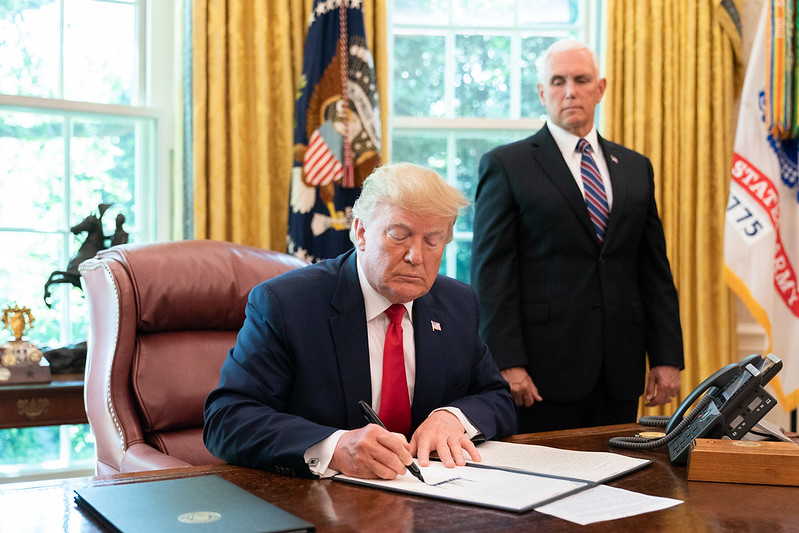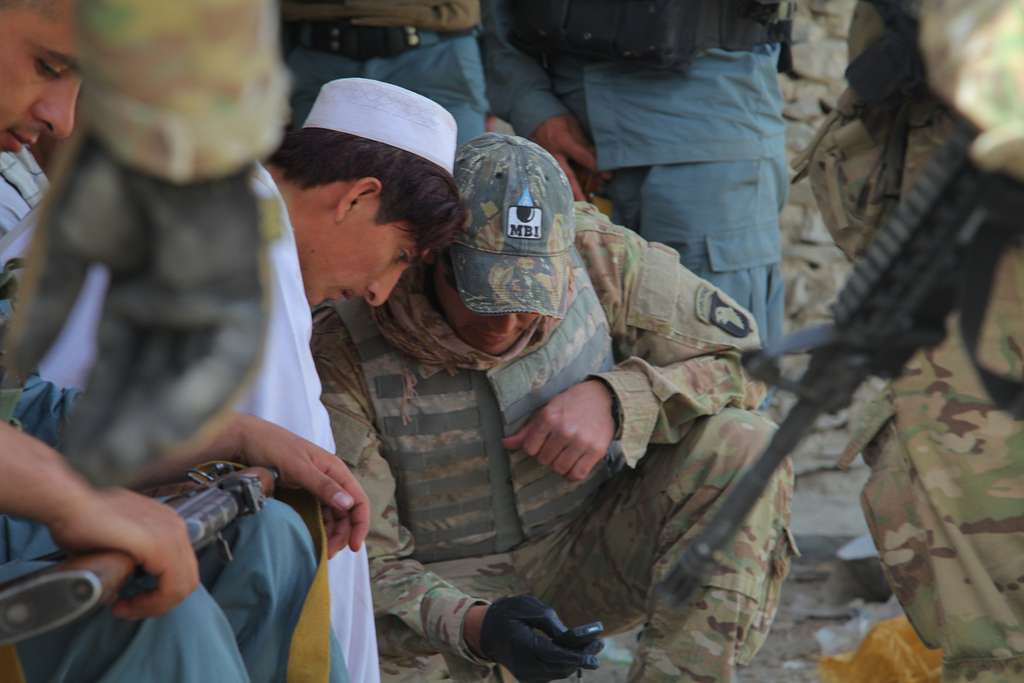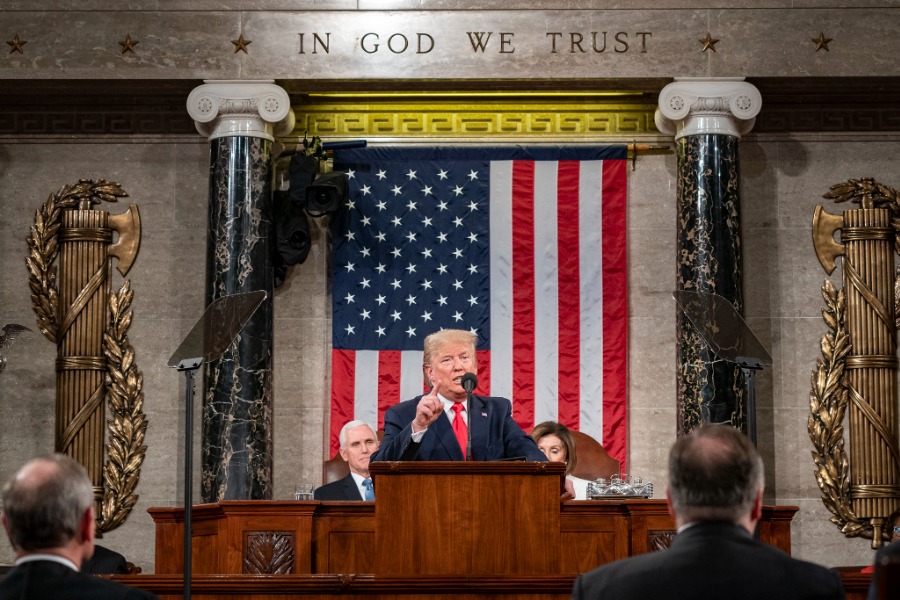The Deterrent Threat of a Vetoed War Powers Resolution
While President Trump can decide whether to use force against Iran, Congress has taken steps that may make him unwilling to do so.

Published by The Lawfare Institute
in Cooperation With

On May 6, President Trump vetoed a joint resolution that would have curtailed his ability to use force against the Islamic Republic of Iran. While the measure had significant support in Congress—passing 55 to 45 in the Senate and 227 to 186 in the House—a veto override attempt unsurprisingly failed. From a purely legal perspective, the nearly omnipotent “imperial presidency” would seem to be as strong as ever. Presidential action, however, requires both ability and willingness, and a focus solely on the ability of the president to act unilaterally overlooks an executive’s actual diminished willingness to do so under the credible threat of congressional retaliation. The power of such a resolution was never fully contingent on gaining the force of law, and the measure has already achieved its goal of communicating a deterrent threat to the White House.
Even the strongest proponents of congressional influence in foreign policy have long conceded that the War Powers Resolution has failed to diminish the ability of the president to wage war absent congressional approval. The War Powers Resolution provides Congress an expedited procedure through which it might curtail a use of force through a joint resolution, but in the near half-century since the act was passed into law the procedure was fully utilized for only the second time with this latest Iran resolution. The first use of the procedure was in late 2018 in an attempt to stop U.S. support for Saudi forces operating in Yemen—an effort that culminated in a presidential veto in April 2019. Passing the Iran resolution and overriding the anticipated veto was considered an uphill battle from the beginning, and now that both the Yemen and Iran resolutions have failed to gain the force of law, Congress might appear unable to reign in an unbound executive’s ability to use force. The existence of the standing army and the historic reluctance of the judiciary to intervene in war powers cases combined with Congress’s apparent ineptitude would together seem to be a sufficient condition for executive control over the use of military force. As Jack Goldsmith put it on Lawfare, “That is our system: One person decides.”
But even if Congress effectively lacks any real power to prohibit the president from using force, that doesn’t mean the legislature does not have substantial influence over the use-of-force decision. Quite the contrary, Congress has always possessed a powerful deterrent capacity to impact the decision to use military force. The “invitation to struggle” over the war powers, as Edward Corwin put it, can oddly enough be analogized to nuclear deterrence. Nuclear deterrence theory distinguishes between defensive capabilities and punitive capabilities, where a defensive capability is a “physical ability to limit the costs an adversary can impose” while a punitive capability is a capacity “to inflict costs on an adversary.” The former affects an adversary’s ability to use force, while the latter affects its willingness to do so. Although defensive capabilities are nearly nonexistent in the nuclear context, the “power to hurt” provided by punitive capabilities provides a strong deterrent against the actual use of nuclear assets.
For example, consider the options the United States had in trying to protect itself against a nuclear strike by the Soviet Union during the Cold War. Defensive capabilities were those truly limiting the physical ability of Soviet thermonuclear weapons from reaching targets in North America—fighter-interceptors able to shoot down Soviet bombers prior to the advent of intercontinental ballistic missiles, and the still unrealized Strategic Defense Initiative anti-ballistic missile shield pursued by President Reagan in the 1980s. By the early 1960s, however, it was accepted that even the best available defensive capabilities would not be successful at physically stopping a Soviet strike. Instead, the United States had to opt for a strategy based on its punitive capabilities: mutually assured destruction. It could not physically stop the Soviet Union from attacking, but the U.S. could deter the Soviets from doing so through the credible threat of massive nuclear retaliation.
To analogize this to the war powers struggle between Congress and the executive, Congress has little—if any—defensive capabilities due to the inherent difficulty of a veto override and the very real question of how any resolution would be enforced. Nonetheless, Congress has robust punitive capabilities. While Congress may not have any real capability to prohibit the president from acting should he choose to do so, it clearly has a strong “power to hurt” the executive. Members of Congress are able to impose substantial coercive pressure on the executive in the war powers context by manipulating public opinion through congressional speeches, investigations and hearings. These are powerful mechanisms given that a strong majority of Americans believe uses of force should have congressional approval, regardless of the party occupying the White House. While the American public often will not sua sponte push back against constitutional overreach, members of Congress have a strong power to trigger it to do so. Congress has additional tools at its disposal, such as the often-cited “power of the purse” and the potential for issue linkage—for example, opposing arms sales under the 1976 Arms Export Control Act and restricting foreign assistance. If large enough, the combined effect of these formal and informal tools can serve as a “power to hurt” and, thus, deter the president from undertaking military action unwanted by Congress.
Indeed, presidents since Eisenhower have consistently recognized—and feared—this punitive power after witnessing Truman’s mauling by Congress for not securing explicit congressional authorization for the use of military force during the Korean War. While congressional Republicans had strongly supported intervention in the summer of 1950, four months later they were able to fully evade responsibility for the conflict and effectively campaign against an increasingly unpopular “Truman’s War” during the midterm elections. Eisenhower refused to intervene in the Battle of Dien Bien Phu without congressional approval, Kennedy feared impeachment during the Cuban missile crisis, and Johnson explicitly sought the Gulf of Tonkin Resolution because of what happened to Truman during the Korean War. Nixon famously sought to hide incursions into Cambodia from Congress precisely in order to avoid congressional backlash, but Congress was nevertheless able to force an end to the Vietnam conflict over the president’s wishes. Indeed, this left the Ford administration in such a bind that it felt unable to intervene during the fall of Saigon to rescue South Vietnamese citizens who had assisted the United States—creating what Ford termed an “imperiled presidency.” Subsequent presidents have, of course, used military force dozens of times without formal congressional authorization, but they have almost always had informal approval from leaders in Congress and thus were not acting under serious threat of congressional retaliation. And, notably, the three major wars undertaken since Vietnam—the Gulf War, Afghanistan and Iraq—have all taken place only after formal congressional authorization was given. More recently, Obama proved unwilling to intervene in Syria in 2013 absent express congressional approval after experiencing political attacks for the lackluster outcome of the 2011 Libyan intervention undertaken without such authorization.
With the Iran resolution, Congress was not merely trying to pass a law in a futile attempt to curtail the president’s ability to initiate military conflict. Instead, it was issuing a clear threat against using force and thus likely substantially lessened the president’s willingness to do so. Indeed, with the votes in both chambers, Congress explicitly signaled that significant majorities thought military action against Iran was a poor idea. By forcing the president to veto the resolution, Congress effectively washed its hands of any responsibility for subsequent bloodshed and made the potential for punishment extremely high. If the president were to go ahead anyway and, for example, conduct extensive airstrikes—and consequently create a high potential for escalation—the political risk would be enormous. If there were any American casualties, members of Congress would be in a strong position to impose costs on the executive by arguing that the president had disobeyed the explicit will of the legislature and with disastrous results. Knowing that the potential congressional retaliation for an intervention gone wrong could be large, the president and his advisers would be forced to think twice about using force unilaterally. Even assuming Congress would not act punitively if the use of force were to end in a decisive foreign policy victory for the United States, the mere potential of punitive action by Congress would create a strong incentive for the president to risk war only if the anticipated probability of decisive victory were very high—a doubtful proposition given the military history of the United States in the Middle East over the past two decades, as well as Iran’s more substantial military capabilities compared to past U.S. adversaries.
Legislators themselves noted this logic when originally passing the resolution shortly after the U.S. drone strike that killed Iranian Maj. Gen. Qassem Soleimani in January 2020. Fittingly using an analogy to a deterrent threat (albeit a nonnuclear one), Senate Minority Leader Chuck Schumer proclaimed after the passage of the resolution in the Senate on Feb. 13 that “[t]he Senate just sent a clear shot across the bow. A bipartisan majority of Senators don’t want the president waging war without congressional approval.” Merely passing the resolution in both houses—even when it was unlikely the measure would ultimately become law—was thought to be worthwhile. Sen. Tim Kaine, for example, opined, “[W]e do think putting this bill on his desk with strong majorities in both houses at a minimum will influence his thinking about whether another war is a good idea or not.” And specifically in response to a reporter’s question about what effect the resolution could have if it were vetoed like the similar Yemen resolution the year prior, Kaine said, “President Trump vetoed it. We couldn’t override it, but President Trump then changed the behavior[,]” noting that in the Yemen case the president had ceased the very action Congress sought to prohibit—the refueling of Saudi planes—even though he had not been legally compelled to do so. When pressed further by a reporter over whether merely putting a bill on his desk would actually influence Trump’s decision-making, Kaine explained, “[W]hen this bill goes on his desk, I’m sure he could care less what Tim Kaine thinks or what fifty-five votes in the Senate means, but the bill getting to his desk is an indication [that] … blundering into another war would be a bad idea. He’s got an election he’s focused on, that he wants to win.” By communicating the potential electoral punishment the unilateral use of force against Iran might entail, leaders in Congress thus thought they could dissuade the president from doing so. As Peter Sellers’s Dr. Strangelove put it, “[D]eterrence is the art of producing in the mind of the enemy the fear to attack,” and this is precisely the strategy Congress pursued in passing the resolution.
Even if Congress is unable to formally take away the president’s ability to launch a war against Iran, it nevertheless has the capacity to effectively create expectations of retaliation that can deter an otherwise capable president from being willing to use force. It might be true that “one person decides[,]” but Congress is able to heavily shape the strategic environment in which this decision is made. While the president is able to act unilaterally, fear of Congress’s “power to hurt” may prevent the president from being willing to do so.





